- Daily & Weekly newsletters
- Buy & download The Bulletin
- Comment on our articles
NUTS weekend: Bastogne commemorates 1944 Battle of the Bulge in the Ardennes
Nine veterans and a concentration camp survivor join commemorations in Bastogne this weekend as the Belgian town marks the 79th anniversary of one of WW2’s bloodiest battles.
The annual Nuts City event will see the Ardennes community celebrating its ‘heroes’ on 16 and 17 December.
Each year, it come together to honour the US army that extinguished a surprise German counter-offensive in 1944 and liberated its people.
But the human toll was heavy. More than 75,000 American soldiers were killed in the Battle of the Bulge, as it was familiarly known, leaving an indelible mark on the American population.
The annual event in Bastogne is famously named after Brigadier General Anthony Clement ‘Nuts’ McAuliffe. When the US army’s 101st Airborne Division was besieged, the Germans asked the general to surrender or be annihilated by massed artillery. His now-famous retort, “Nuts!”, completely stumped the Germans.
Commemorative activities
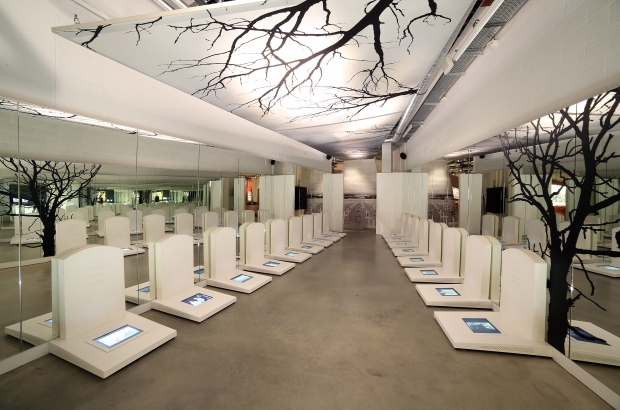
Among the free activities staged by Bastogne War Museum (pictured), visitors can hear live testimonies of American and Belgian veterans in meet-and-greet sessions. Former Belgian resistance member, 99-year-old Anne Megens, will also share her story of being deported to Ravensbrück in 1943.
Another highlight of the commemorative programme includes an outdoor US-style military camp with 150 reenactors and some 20 vehicles from the war era. They will provide insights into soldiers’ and civilians’ lives during the bitter winter conflict via demonstrations, from first aid to blank rifle fire and training drills.
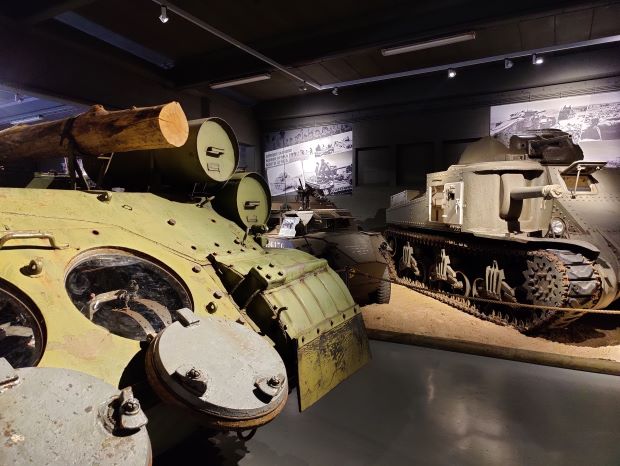
Newly-renovated Bastogne Barracks (pictured) joins in the event, opening its doors to visitors who can discover the centre that specialises in restoring old military vehicles.
Among the prize exhibits is the Sherman Jumbo ‘Cobra King’. Symbolising the liberation of the town on 26 December 1944, it’s better known as ‘First in Bastogne’. There’s also reenactments, displays of vehicles and equipment, a tank parade and a militaria sale.
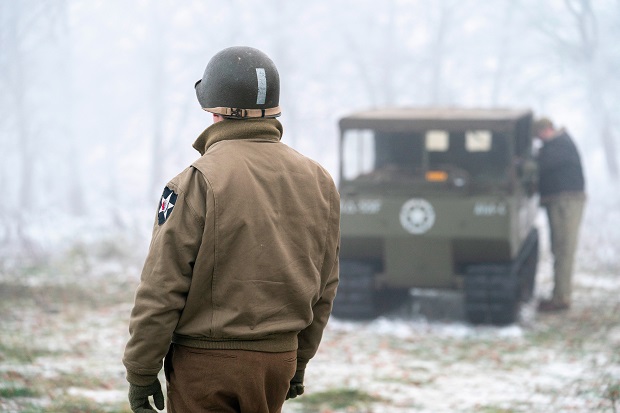
A battle too far
There are few Americans who haven’t heard of Bastogne, the strategic border town in the province of Luxembourg that was snowed in and surrounded by the German army in its final large-scale offensive of the war. In a desperate gamble to split the Allied armies by a surprise blitzkrieg through the Ardennes to Antwerp, Hitler ordered hastily assembled Panzer divisions to strike.
In a series of battles in freezing temperatures between December 16, 1944 and January 25, 1945, more than a million soldiers fought for control of this wooded, hilly area of south-east Belgium. It became known as the Battle of the Bulge because the Allied line resembled a large bulge as the Germans drove deeper in an attempt to secure vital bridgeheads.
About 85,000 Allied soldiers were killed, injured or reported missing, with the American army bearing the brunt. The equivalent figure for the German army is estimated at 100,000. Almost 3,000 civilians died, and the siege left a lasting legacy on the tight-knit community.
Build-up to German counter-offensive
It was a different story earlier in 1944, when Belgium and its neighbours were suffering the ignominy of occupation. In June, the Allies launched the high-risk D-Day operation. Paris was liberated in August, and by September, Mons, Namur, Liège and the Ardennes had been liberated by American divisions; Tournai, Brussels and Antwerp by British troops. The Germans appeared beaten and in retreat.
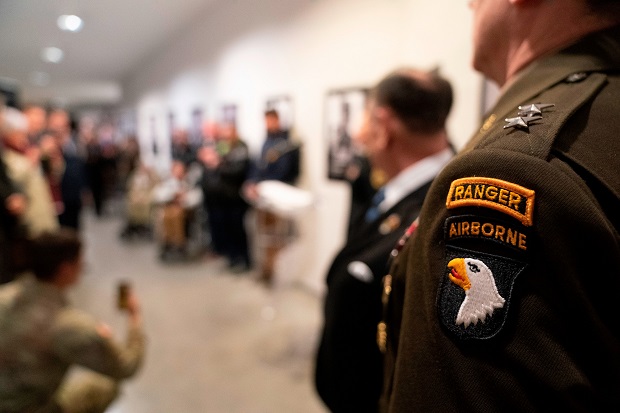
In the Ardennes, six divisions totalling around 75,000 men were waiting for their Christmas parcels. They were in a ‘quiet sector’ and in their spare time shot boar from spotter aircraft. Totally unprepared for winter fighting, they lacked basic items such as overcoats and gloves and were a mix of battle-fatigued units and new recruits.
Under pressure from the Allies, on the ground as in the air, the Germans were suffering a serious shortage of fuel and other supplies. Their surprise offensive was reliant on seizing materials from their foe. To support the attack, a unit was formed to infiltrate the Allied lines dressed as American soldiers, aiming to spread confusion and disrupt Allied troop movements. Fluent in English and versed in American slang after guarding PoWs, they switched road signs and attempted to seize and destroy vital bridges. This certainly increased the confusion at the beginning of the battle, but was foiled by the US army intensifying its identity checks and interrogating each soldier on his knowledge of US celebrities and sports stars.
Surprise attack on 16 December
As dawn rose through the fog on December 16, more than 250,000 Germans attacked a 150km front along Luxembourg and southern Belgium. Taken by surprise, US troops were scattered after fierce, chaotic and sometimes hand-to-hand fighting.
The next day, a group of the 6th SS Panzer army captured 125 men from a US field artillery observation battery in the town of Malmedy, north of the bulge, then mowed them down in cold blood, leaving 86 dead. The Baugnez 44 Historical Centre records the infamous event.
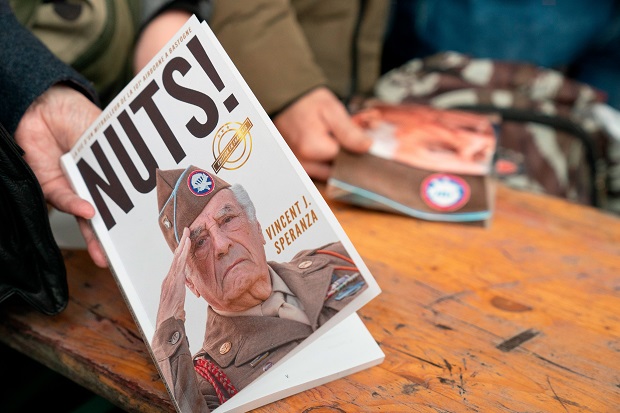
The initial assault was followed by heavy snow, hampering any counter-offensive by the Allies. The 101st Airborne Division became besieged in Bastogne but held on to the town. It was on 22 December that the Germans asked McAuliffe to surrender and his famous reply “Nuts!” made military history.
Christmas celebrations amid shelling
As skies cleared on 23 December, the US Air Force parachuted supplies to soldiers. Embedded in foxholes in frozen ground in forests around Bastogne, they were desperately in need of food, equipment and medical supplies. Among them were the airborne’s Easy Company, immortalised in Steven Spielberg’s TV series Band of Brothers.
But the improvement in weather opened the skies to the Luftwaffe, which bombarded the town on Christmas Eve. Amid the siege and shelling, the men continued their festive celebrations. A packed midnight mass took place in town, with wounded soldiers weeping on hearing Silent Night. German PoWs were visited by McAuliffe as they sang their own hymns and he wished them a merry Christmas.
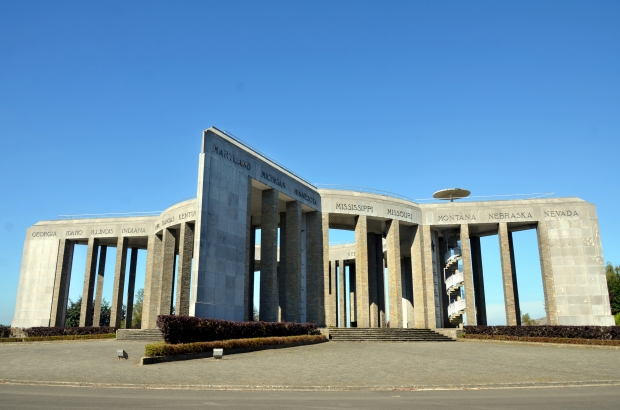
There was little respite: on Christmas Day the Germans launched a further assault. American forces retaliated and held the ground, though both sides suffered serious losses. General George Patton’s US Third Army’s counter-offensive on December 26 not only broke the ring enclosing Bastogne but also destroyed a portion of the German penetrating force, eliminating hundreds of enemy vehicles and thousands of troops.
It was a decisive victory for the Allies. Today, relics of the battle can be found all over the area, with memorials to lost soldiers dotting the countryside. Heavily bombed Bastogne was rebuilt and the square, complete with a Sherman tank, was named after McAuliffe.
Successive generations have continued to honour the army that lost so many in liberating the town and help bring about the end of the war. The annual Nuts City event is but the pinnacle of its commemorations.
Photos: (main image) ©Tempora ©Bastogne War Museum; ©Bastogne Barracks; Nuts weekend events 2022 ©Tempora; Mardasson Memorial; Mardasson Memorial ©P Willems











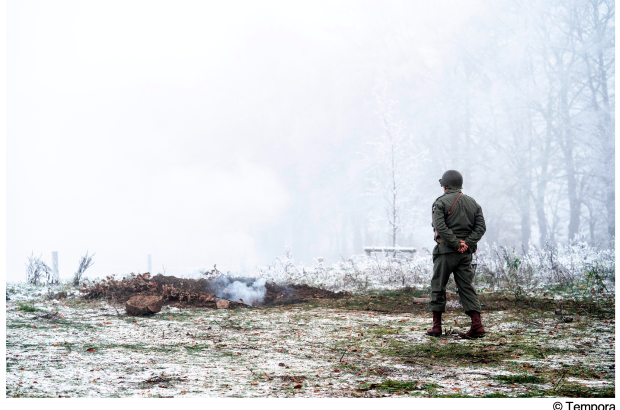







Comments
My dad was with the 11th Armored Division that fought in the Battle of the Bulge. I never thought I would be living in the country where he fought against the Nazis. I am so proud of him and his unit.
Hi Bulletin. I am a British semi retired university lecturer and author with 16 books and 2 Emmy Awards to his name. I occasionally provide battlefield tours of the Ardennes and the Western Front and historical city tours. If you’re interested in learning more please contact me : martinking1959@gmail.com